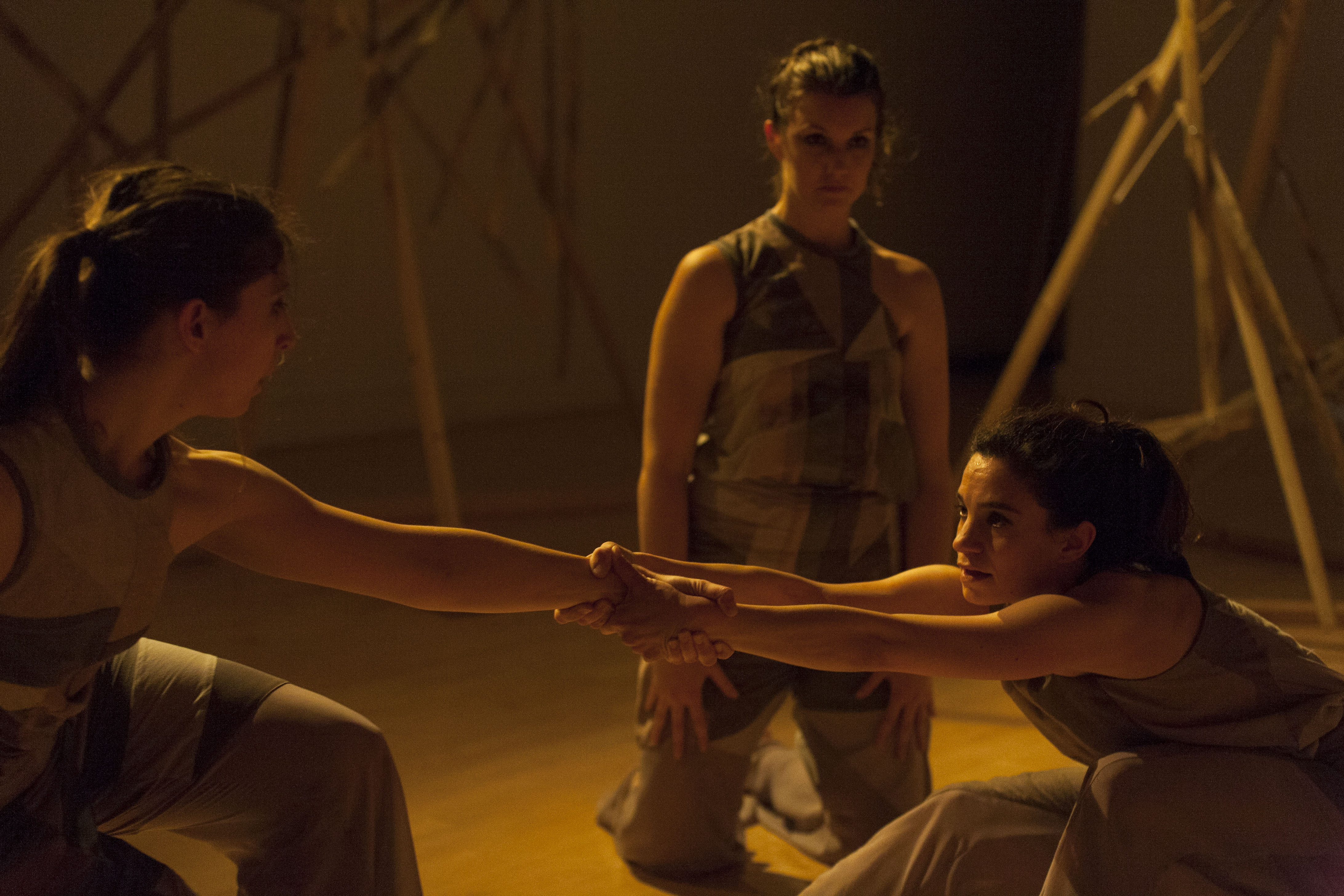In her fifth season as an Artistic Director, Andrea Cerniglia continues to “go big or go home.” As a 21st Century Diaghilev of sorts, Cerniglia has called on some of the best collaborators in the business for the creation of Imposter/Contained, continuing a series that began last year with Imposter/Malleable.

As with the first, this Imposter is an immersive installation full of eye candy. The audience is given instructions to wander and move about the space as we wish, choosing our vantage point within the three-dimensional dance space. We must make decisions about where to stand and, once we decide, what to look at, because things are happening all around us. The choices we make have a direct influence on what we experience and how we interact with the work, or don’t. As the evening progresses, the impact of our decisions as viewers became quite clear.
But I’m getting ahead of myself.
Coming into a dropshift show is a bit like entering a museum. We wander and pause, wander and pause, sip our drinks and then wander some more. Three women are strewn about the room (Cerniglia, Colleen Welch, and Julie Brannen) surrounded by an intricate set and video installation by Rosa Gaia Saunders and Jeremiah Jones. On the risers of Links Hall’s white space are two projection surfaces on easels, and the fourth performer, Weichiung Chen, with heavy black makeup and a gorgeous, ruffled, low-backed gown. Per usual, Cerniglia has created a quartet of women, however Chen never leaves her post. She is a dance within a dance that, even by the end, does not interact with anything or anyone else. When I took the time to gaze at her and away from the trio, it was all loveliness and intrigue, but did little to enhance the work as a whole.
In the main performance area, Saunders and Jones’ seemingly unstable wooden jungle gym is embedded with triangular projection screens. Christopher Fisher-Lochhead’s piano score is played from within a translucent triangular room built into the space. The environment is a balance of natural and unnatural materials, warms and cools, beautifully complimented by Richard Norwood’s lighting and Collin Bunting’s exquisite costumes – a patchwork of alternating stiff and soft fabrics in gray and mauve tones. It is a perfect blend of mediums, however Cerniglia’s desire to create cross-disciplinary, multi-media work doesn’t distract from the fact that dance is her home. Unlike performance artists who incorporate movement into their work, Cerniglia’s work clearly rises out of dance. Her dancers are crisp, clean, and technically sound (Welch and Brannen have never looked stronger).
Cerniglia is really good at waiting. Waiting to start, waiting to finish the idea, finding the right spot to change, move, arc, etc. This Imposter is less playful than the last; the score and the dance are screaming for a major chord so we can feel some sort of resolution. The performance simply fades out – the performers didn’t even emerge for a bow. It’s a resolution we never get, and maybe that’s the point. Though the work has moments of levity to break up the ominous tone, one wonders if these moments are provided by us, the audience, and vary from night to night.
I mentioned that our choices mattered, and on this particular evening (Friday), the dancers found themselves sandwiched between audience members for a particularly cheeky section of gestures. Coincidentally, Cerniglia was squeezed it between her former Zephyr Dance coworkers Michelle Kranicke and Anne Kasdorf, who both gazed up at her with coquettish smiles. They are perhaps the only two audience members who might have been willing to live in that uncomfortable space for so long; others ran for the hills when they saw the dancers approaching. This gestural section dissolved into an intentional, contagious case of the giggles as the dance descended toward its end.
I have no idea what Imposter/Contained is about. It feels neither deceitful nor contained. It is beautiful and frustrating. I loved it, but I can’t identify why.
Oh, art.
